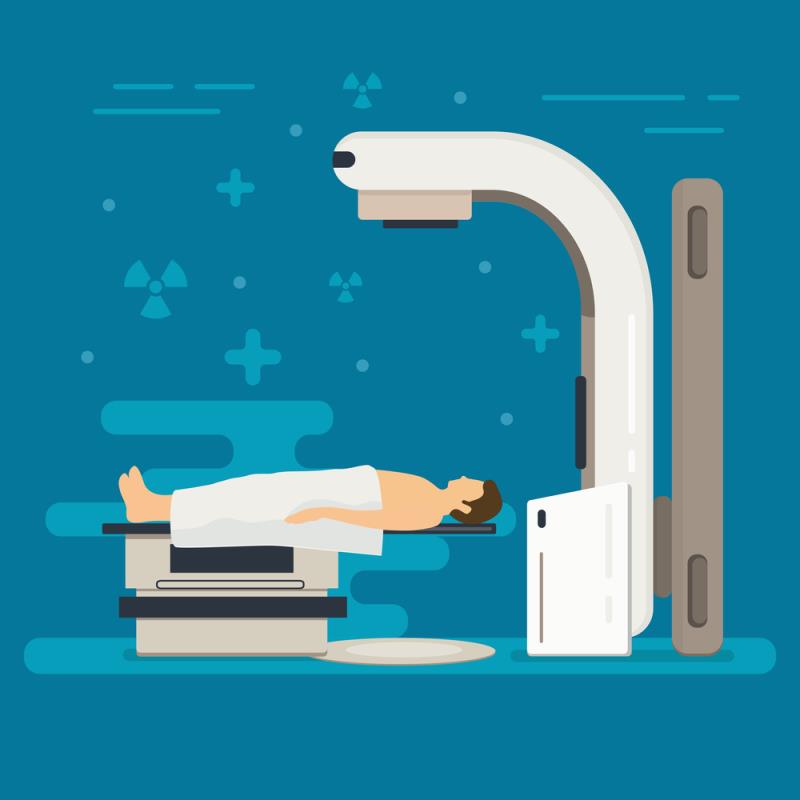
Preemptive local ablative therapy (LAT) has demonstrated an encouraging 1-year progression-free survival (PFS) rate and an acceptable safety profile in non-small-cell lung cancer (NSCLC) patients with oligoresidual disease (ORD) after EGFR tyrosine kinase inhibitor (TKI) therapy.
In the phase II ATOM study conducted in Hong Kong, researchers analyzed 16 adult patients (median age, 57.3 years; 7 male) with stage IV NSCLC who had ORD (defined as ≤4 PET-avid lesions) after 3 months of first-line EGFR TKI therapy. The patients received stereotactic ablative radiotherapy (SABR) as LAT for ORD. A total of 22 lesions were irradiated (lungs, n=16; bones, n=4; lymph nodes, n=2). [Lung Cancer 2020;142:41-46]
After a median follow-up of 39.1 months, the primary endpoint of PFS rate at 1 year was 68.8 percent. Median PFS was 15.2 months (18.2 months from commencement of EGFR TKI therapy). Median overall survival (OS) was 44.3 months.
According to the researchers, no grade ≥3 adverse events (AEs) were reported. AEs experienced by the patients included grade 2 bronchial atresia (n=2), grade 2 pneumonitis (n=1), and grade 2 oesophagitis (n=1).
The proof-of-concept study was terminated prematurely due to slow accrual. In a post hoc analysis that compared PFS and OS of the ATOM cohort and a screen failure cohort (n=43; patients with metabolic complete response [CR] on screening PET-CT, progressive disease, technical issues or lesions <1 cm, >4 residual disease sites, or who declined radiotherapy), preemptive LAT was associated with longer PFS (median, 15.2 months vs 11.1 months; p=0.043). PFS rates at 1 year and 2 years were higher in the LAT vs screen failure cohort (68.8 percent vs 46.5 percent at 1 year; 37.5 percent vs 8.1 percent at 2 years).
Multivariate analysis showed that preemptive SABR was an independent prognosticator of better PFS (hazard ratio [HR], 0.41; p<0.01), as was younger age (HR, 0.97; p=0.018).
However, OS did not differ significantly between the ATOM and screen failure cohorts (median, 44.3 months vs not reached; HR, 1.103; p=0.84). According to the researchers, this may be related to the higher proportion of T790M mutation–positive patients who used osimertinib in the screen failure cohort.
“Interestingly, there were more oligoprogression (≤4 progression lesions) in ATOM, and more systemic progression (>4 progressing lesions or occurrence of malignant effusion) in the screen failure cohort,” they noted. “Such change in pattern of progression may arguably be related to SABR changing the natural behaviour, or simply the difference in biology of the two cohorts. This can also be due to the difference in scan frequency as the ATOM group was mandated for regular and more frequent scanning, which may lead to the detection of oligoprogression. Without a randomized study, this question remains unanswered.”
Limitations of the ATOM study included its single-arm design with small sample size, the older age of patients in the screen failure vs ATOM cohort (p=0.039), the higher proportion of patients with ECOG performance status 0 in the ATOM vs screen failure cohort (62.5 percent vs 37 percent; p=0.08), the median PFS in the historic cohort being not specifically of patients with ORD, and the spectrum of patients with favourable (metabolic CR) and less favourable characteristics (>4 residual PET-avid disease sites) in the screen failure cohort.
The study was conducted by researchers from the Hong Kong Integrated Oncology Centre, Pamela Youde Nethersole Eastern Hospital, Chinese University of Hong Kong, Queen Elizabeth Hospital, Hong Kong Sanatorium & Hospital, and Prince of Wales Hospital.